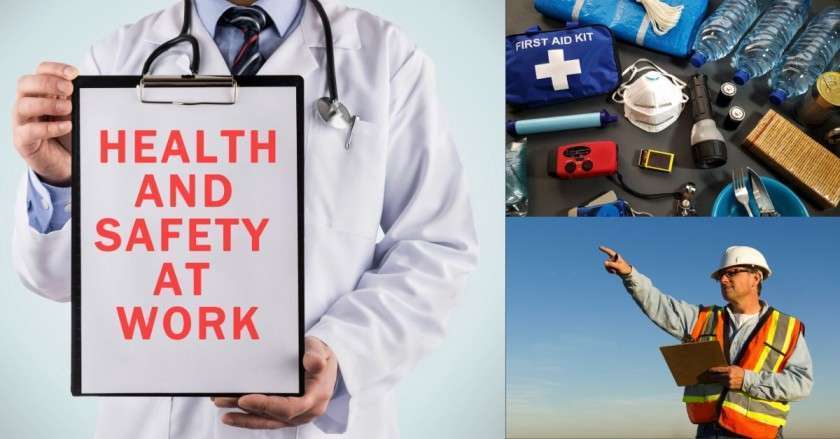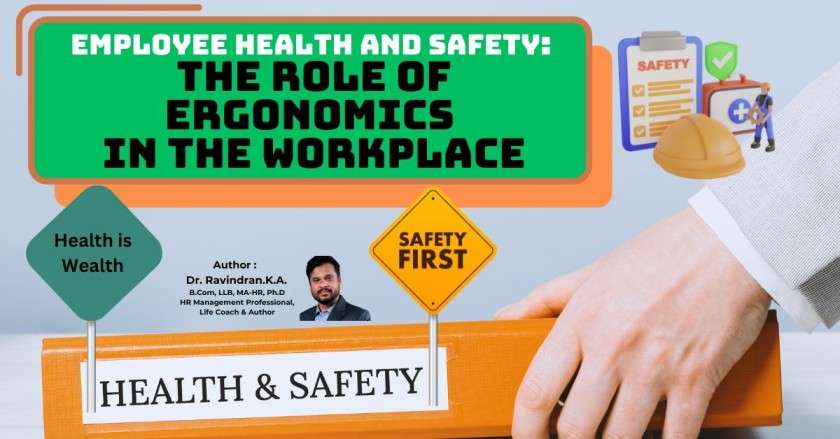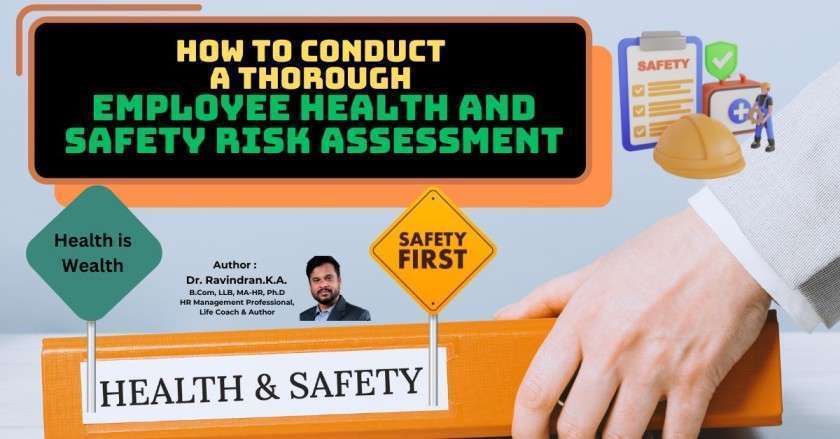“Discover the top 10 essential employee health and safety tips to create a safer workplace. Implement these best practices to boost productivity and ensure compliance.”
Introduction | Employee Health and Safety
Ensuring employee health and safety in the workplace is not just a legal requirement but a moral obligation for every employer. A safe work environment boosts productivity, reduces absenteeism, and enhances employee morale. Here are the top 10 essential employee health and safety tips to help you create a safer, healthier workplace.
Thank you for reading this post, don't forget to subscribe!
1. Conduct Regular Risk Assessments
Regular risk assessments are crucial to identify potential hazards in the workplace. By evaluating risks regularly, employers can implement preventive measures before accidents occur. According to the Occupational Safety and Health Administration (OSHA), workplaces that conduct regular risk assessments reduce the likelihood of workplace injuries by up to 30%.
2. Implement Comprehensive Safety Training
Providing comprehensive safety training to employees is essential. Training should cover emergency procedures, proper equipment uses, and hazard recognition. Companies like DuPont have reported a 40% reduction in workplace incidents after implementing rigorous safety training programs.
3. Promote a Culture of Safety
Creating a culture where safety is a priority involves engaging employees at all levels. Encourage workers to report hazards and participate in safety meetings. Google’s “Safety Week” initiative is a great example, where employees are actively involved in safety drills and workshops, fostering a collective sense of responsibility.
4. Provide Personal Protective Equipment (PPE)
Ensure that all employees have access to necessary PPE such as gloves, masks, and helmets. Regularly inspect and replace damaged equipment. A study by the Bureau of Labor Statistics found that 60% of workers who suffered eye injuries were not wearing eye protection at the time of the accident.
5. Maintain Clean and Organized Workspaces
A clean and organized workspace reduces the risk of accidents. Encourage employees to keep their work areas tidy and ensure that emergency exits are clear of obstructions. According to a report by the National Safety Council, slips, trips, and falls account for 25% of workplace injuries, many of which are preventable with proper housekeeping.
6. Promote Mental Health Awareness
Employee health isn’t just physical; mental health is equally important. Implement programs to support mental well-being, such as stress management workshops and access to counseling services. The World Health Organization (WHO) estimates that depression and anxiety cost the global economy $1 trillion per year in lost productivity.
7. Implement Ergonomic Solutions
Ergonomic solutions help prevent musculoskeletal disorders (MSDs), which are common in jobs involving repetitive tasks or prolonged sitting. Provide ergonomic chairs, adjustable desks, and regular breaks. The implementation of ergonomic solutions at Cisco Systems led to a 50% reduction in MSDs.
8. Establish Clear Safety Procedures
Document and communicate clear safety procedures for all tasks. This includes step-by-step instructions for operating machinery, handling hazardous materials, and responding to emergencies. Ensure that these procedures are easily accessible to all employees.
9. Encourage Regular Health Screenings
Regular health screenings can detect potential health issues early. Offer periodic health checks for employees, including vision and hearing tests, cholesterol screenings, and flu vaccinations. Companies with wellness programs, such as Johnson & Johnson, report an average annual saving of $565 per employee due to reduced health care costs.
10. Utilize Technology for Safety Management
Leverage technology to enhance safety management. Use software to track incidents, monitor compliance, and provide training modules. Wearable devices can also monitor workers’ health in real time, alerting them to potential hazards. For example, General Electric uses wearable technology to monitor the environment and employee health, significantly improving safety outcomes.
FAQs
Q1: Why are regular risk assessments important?
A: Regular risk assessments help identify and mitigate potential hazards, reducing the likelihood of workplace injuries and ensuring a safer environment for employees.
Q2: How can safety training benefit my company?
A: Safety training educates employees on proper procedures and hazard recognition, leading to a significant reduction in workplace accidents and promoting a culture of safety.
Q3: What are the benefits of ergonomic solutions?
A: Ergonomic solutions prevent musculoskeletal disorders, improve employee comfort, and enhance productivity by reducing the physical strain on workers.
Q4: How does promoting mental health impact the workplace?
A: Supporting mental health improves overall employee well-being, reduces absenteeism, and increases productivity by creating a more supportive and stress-free work environment.
Q5: What role does technology play in workplace safety?
A: Technology streamlines safety management, enhances compliance tracking, and provides real-time monitoring of employee health, leading to better safety outcomes.
By following these essential tips, you can create a safer and healthier workplace, benefiting both employees and the organization.
Thank You for Reading!
Thank you for taking the time to read our blog on Employee Health and Safety. We hope you found the information valuable and insightful. Your commitment to creating a safer and healthier workplace is commendable, and every step you take towards improving health and safety standards makes a significant difference.
If you enjoyed this post and found it helpful, please share it with your colleagues and network to spread awareness about the importance of employee health and safety. Don’t forget to subscribe to our newsletter for more tips, insights, and updates on the latest trends in workplace safety. Let’s work together to create a safer, healthier work environment for everyone!
If you have any questions, need further information, or would like to discuss how to enhance health and safety in your workplace, please feel free to us. We’re here to help and support you in any way we can.
Stay informed, stay healthy & safe!
 hroptimum
hroptimum



